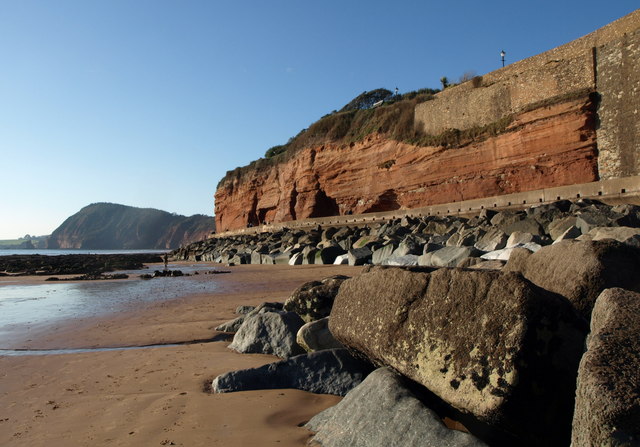Interesting information
As you move towards Beer the easterly dip increasingly brings the pale sands of the Upper Greensand and its overlying Chalk down to beach level and by Beer Head the entire cliff is taken up by these Cretaceous rocks.
All things being equal, you could expect to see Jurassic rocks lying above the older Triassic material and below the younger Cretaceous deposits. The Jurassic Period began about 206 million years ago. However, you will notice no reference above to Jurassic rocks between the Triassic mudstones and the Greensand and Chalk of the Cretaceous Period – they are missing from the site and have been eroded away. This kind of break in the geological story is known as an unconformity.
The coastline is part of an Area of Outstanding Natural Beauty, Site of Special Scientific Interest and World Heritage Site.

